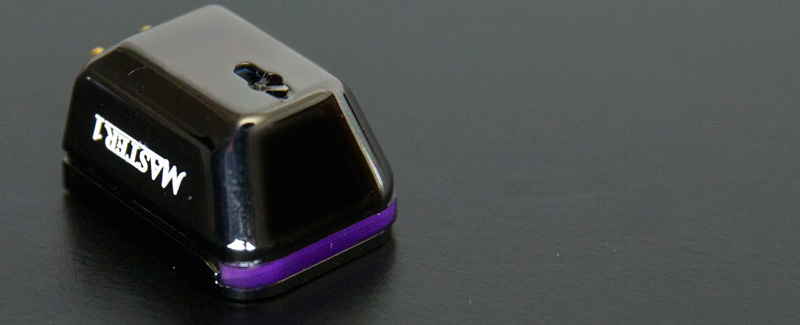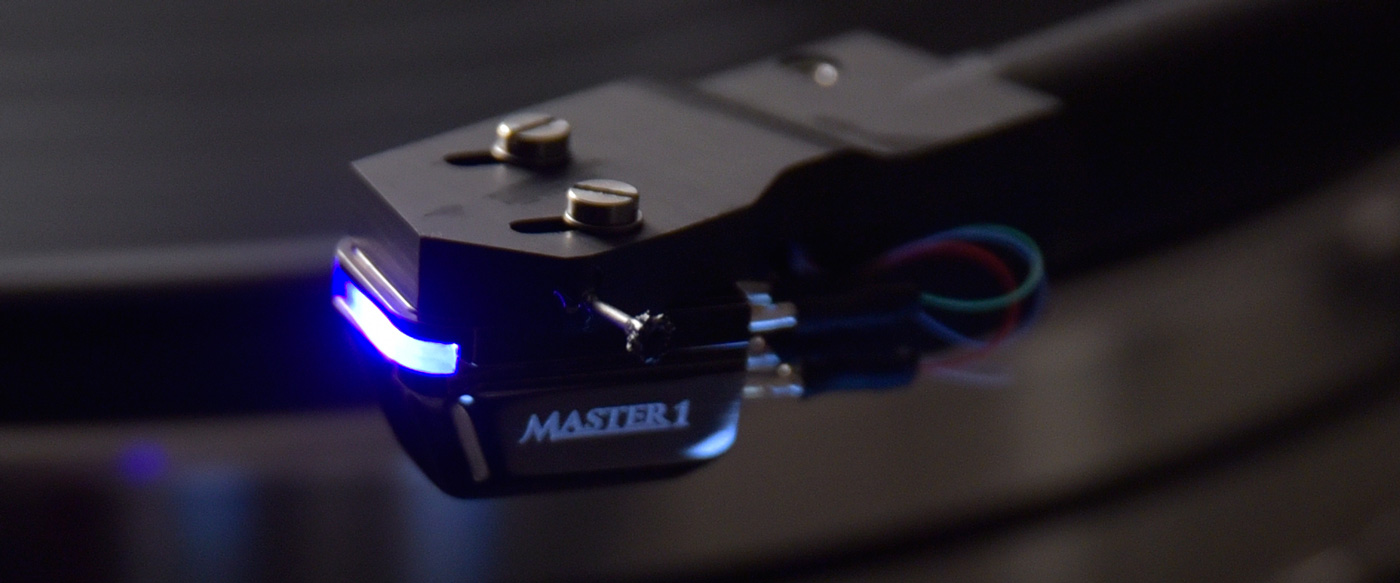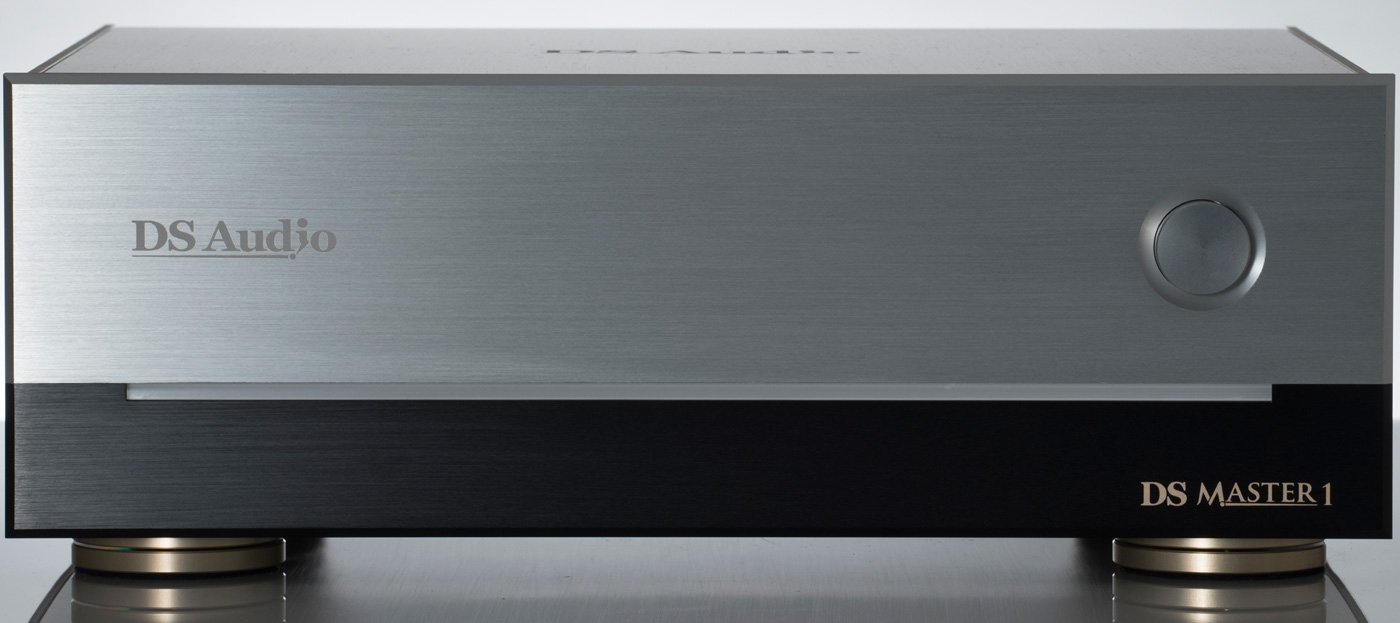Back in April of 2016, I reviewed the DS Audio DS-W1 Optical Phono Cartridge and its matching preamp/equalizer. The DS-W1 preamp/equalizer I reviewed was the first to have built-in RIAA equalization. This cartridge and preamp, when used from the RIAA output, has been in my reference system ever since that review. If you are interested in optical cartridges, it would probably be worth your while to go back and read part one of that review, which deals with the technical side of optical cartridges.
One thing I didn’t mention in that review was that DS Audio is very honest in calling their phono stage a preamp/equalizer. The truth is every phono stage is exactly that — a preamp and an equalizer. Because all modern LPs are equalized to the RIAA curve when they are cut, the job of a phono stage is to match that curve as closely as possible to increase the signal. So don’t be thrown off by the word equalizer, it’s just an honest name.
I know there were a couple of things with the DS-W1 that concerned a few listeners. The first was the bass, which could be a little overpowering through output one and not quite right through the subsonic output. I can promise you that by changing the subsonic output to the RIAA equalization curve, DS Audio has fixed the bass issue in the DS-W1.
The second complaint by a few was that the DS-W1 does not have as big a soundstage as the very best moving coils. As I talked about in my review of the DS-W1, I was able to get a most satisfying soundstage with a little tweaking of the ART Tuning Cones in my room. I should admit what most audiophiles mean by soundstage is not that important to me. It’s great if you can have it, but there are other things that are more important to me. One of the major design goals of the DS Master1 was to increase the channel separation to get a more room-filling soundstage. I can tell you that the DS Master1 totally succeeds with this.
About the DS Master1
Ever since I heard about the DS Master1, I have been trying to get my hands on one. Starting in 2017, DS Audio has three optical cartridges and three preamp/equalizers that all work with each other. This makes it possible to move up in the line in steps or to find the combination that is right for your ears and your pocketbook. A little birdie tells me that there will most likely be a trade-in path to help owners to move up in the line.
The DS Master1 Optical Phono Cartridge is the flagship of the DS Audio line and has some significant changes from the DS-W1. The DS Master1 positions the newly designed micro-optic sensor unit closer to the stylus, resulting in a shorter optical signal path. It also uses a new wire-suspended cantilever. These changes create significant improvements in channel separation.
DS Audio also changed the shape of the stylus and the material used for the cantilever. The DS Master1 uses a micro-ridge stylus that has a minimum curvature radius and is mounted on a sapphire cantilever. The body of the cartridge is made of what they call “Ultra” duralumin to ensure the highest possible rigidity. I should mention that the change from a Shibata stylus on the DS-W1 to a micro-ridge stylus makes it even more critical to get the geometry and VTA right. It took me a little while to get the VTA just right, but it was well worth the time.
The biggest visual change is with the DS Master1 Preamp/Equalizer. To start with, it’s about four times the size of the DS-W1 and weighs in at 53 pounds. That heavy weight comes from the twelve 120K of electrolytic capacitors and three transformers used in the DS Master1 phono stage. To achieve the lowest possible impedance, a pure copper bus-bar provides the connection for the bank of capacitors.
The DS Master1 uses fully discrete dual-mono circuitry with three dedicated power supplies. Each channel has a dedicated power supply to deliver more than ample power, and the third power supply is dedicated to the cartridge LED drive system for the DS Master1 phono cartridge. The DS Master1 features both single-ended RCA inputs and balanced XLR inputs. There are three sets of single-ended RCA and three sets of balanced XLR outputs as well as three separate low-frequency cut-off points:
- Output 1 is “DS Standard” single cut-off with 6db/octave at 30Hz.
- Output 2 is “RIAA Standard” double cut-off with 6db/octave 50.5Hz and 6db/octave at 30Hz.
- Output 3 is “RIAA Sub-sonic” triple cut-off with 6db/octave 50.5Hz, 6db/octave at 30Hz, and 12db/octave at 25Hz. Each low-frequency contour is accessed by its own dedicated single-ended RCA or balanced XLR output for a total of six sets of dual-mono outputs.
A Note About Break In
When I received the DS Master1 Cartridge and preamp/equalizer for review, I knew the preamp/equalizer was a demo that had been used at shows and for dealer demonstrations. I assumed that the cartridge was as well. So, I didn’t assume there was any need for break in and just let it warm up. It turned out that I was wrong. The cartridge was brand new. The result was that for the first day or two I thought the DSMaster1 was incredible but lacking in the kind of big tones I so desire. After around 40 hours of playing this turned out not to be true. The DS Master1 has rich, beautiful tonality and the best musical flow I have heard in my room. I am sharing this to encourage anyone who gets this setup to give it time to break in. I don’t know how long the preamp takes to break in since it already had many hours on it when I got it.
Listening to the DS Master1 Optical Phono Cartridge and Preamp/Equalizer
I used my reference system for review. My system consists of my AMG V12 turntable with their 12-inch Turbo tone arm placed on an HRS M3X-1921-AMG isolation platform made for the V12. The power amp for the review was my Pass Labs XA 30.8, and the speakers were my Teresonic Ingenium XR Silvers. All interconnects; speaker and power cables were High Fidelity Cables CT-1 Ultimate Reference Cables. Power conditioning was from the HB Cable Design PowerSlave Marble.
To be honest, I wasn’t prepared for the sound of this phono playback system. I mean, after spending three years listening to the incredible Soundsmith SG-220 Strain Gauge and then the last eleven months with the DS-W1 Optical, I thought I had a handle on what a vinyl playback system was capable of. Not only was I surprised, but I also must admit it’s going to be hard to adequately describe what the DS Master1 cartridge and phono preamp did for my system. It was an experience of an incredibly clear window on live recordings that I have only heard from Strain Gauge or optical cartridges. The sound of the DS Audio’s optical cartridges is so quiet, so clear, so smooth and so lacks the blurring of vibrating magnets that it sounds more like a tape recording than what we have come to think of from vinyl. The DS Master1 system combines this sound with the huge soundstage of the very best and most expensive moving coil cartridges. It’s kind of like having a speaker with the power and clarity of big horns plus the soundstaging abilities of the best monitors and the natural-sounding detail of a great electrostatic. It also has an incredibly silky purity to the high-end that is just beautiful, and it extends the bass with both power and air. The overall sound lets you forget the system and focus more on the performance you are listening to.
The first LP I listened to with this setup was Joan Baez’s live album From Every Stage. On “Swing Low, Sweet Chariot” the sound was unbelievably alive and open with a holographic, three-dimensional soundstage. It had incredible spatial information and an ease about it that made it sound as if I was at the concert listening to Joan Baez. Her voice seemed much more real; this was something to do with the combination of transparency, air and the way the DS Master1 portrays spatial information. On side four of the album, Joan performs “Amazing Grace” as a sing-along. The sound from the stage and crowd was unbelievably huge. When you combine this with the clarity and natural way it sounds, it really makes you feel like you’re at the concert. I bet you won’t be able to keep from joining in the singing.
Then I played Rob Wasserman’s Duets, one of my favorite albums. I love to hear the standup bass played well, and Wasserman’s bass playing is superb. My two favorite cuts are Wasserman’s and Jennifer Warnes’ version of “Ballad of the Runaway Horse” and his duet with Stéphane Grappelli of “Over the Rainbow.” On both songs, the bass was deep, quick and very musical with nice air around and within the instrument. Warnes’ voice has never sounded better on my system, and Grappelli’s playing of the violin was simply incredible and made me want to applaud at the end of the song.
Next, I played some show tunes. It didn’t matter whether it was Cabaret, Chicago, Evita, or Les Misérable, the stage was alive and very three-dimensional. With this kind of music, your enjoyment is certainly enhanced by a well-done soundstage and the ability to hear the crowd at the venue. None of these LPs are in any way audiophile recordings, but after listening to them, I felt like I had been to a great show on Broadway or in San Francisco. By the way, isn’t that what it’s all about?
I listened to one Ellington recording after another. I had never heard my system play big bands like this before. The ability to get really loud without strain and for the brass to have real bite and yet never sound overly shrill was amazing. The combination of dynamics, spatial cues, and tonal correctness was so much fun to listen to. The depth of tones added to the beauty of his band’s performances.
I listened to the entire Bill Evans box set, and consistently from one LP to another heard the kind of big tone you need to truly enjoy great jazz. The kind of air and detail you need for a great piano performance was so moving, as were the micro-dynamics that can make a system sound more like a piano. The interplay between the instruments was easy to hear, and the emotions were easy to feel.
I love the emotions of live recordings, and the DS Master1 brings these out. There’s also something about the ability to hear the audience that adds to the emotional experience. The ability to carry the pace, rhythm and timing so well leads to that emotional experience and makes music one of the real joys of my life.
- (Page 1 of 2)
- Next page →



I didn’t see any mention of the cart/equalizer’s performance on mono lps. As this was a strong suit of the Soundsmith strain gauge unit, I would be curious how they would compare in this regard.
I would say it’s about the equal of the strain gauge on mono LPs. I’m sitting hear right now listening to Ella sing Cole Porter and it never sounded better.
Any chance you will be auditioning the DS 002 system in the future? I noticed that you upgraded your tonearm. It would be helpful to hear the tonearm specs/mechanical ranges DS recommends that best work with their suspension & weight of this technology cartridge ie effective mass in grams, suspension compliance rating of cart, tonearm viscous or mechanical damping potential effects, etc. Maybe the distributor could find out & make that info available to those of us with curious minds for potential pre-purchase due diligence, Thanks.